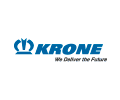When you run a transport company, the safety of your passengers and cargo is paramount. That’s why it’s essential to understand all available vehicle safety features before investing in new vehicles for your business. In this blog post, we’ll take a closer look at some of these vital components. No matter how far-reaching or ambitious your business’s growth strategies may be, keeping people and packages safe should always remain priority number one!

Via Pixabay
Different Types of Vehicle Safety Features
Commercial vehicles transport goods and people, so it’s critical to ensure they are equipped with the proper safety features for a safe and secure journey. For example, commercial vehicle lighting is among the most important safety features—it not only helps protect other drivers on the road who share the same route, but it also allows transport companies to meet the legal requirements for proper registration and minimise the risk of mechanical damage and harm. In addition, lights such as headlights, brake lights, indicators, monitors, emergency flashers, and stop lamps can alert other motorists or pedestrians of potential hazards while providing visibility in case of a breakdown. Other vehicle safety features to consider include lane-assist technology like rain sensors, lane departure warnings which detects unintentional drifting, blind spot detection systems which analyse surroundings before changing lanes, airbags that deploy upon an impact or sudden stop, ABS brakes that help control wheels during hard braking scenarios, and side webbing curtains in case of rollover collisions. All of these features are essential in keeping those who drive commercial vehicles and their cargo safe while travelling between locations.
The Benefits of a Fleet Monitoring System
Using a fleet monitoring system to keep track of your business’ vehicles provides many safety features that can help maintain the well-being of your employees and other road users. For example, it can provide data related to the speed, location, and usage of each vehicle, allowing you to manage employee performance better, detect any mechanical issues with a car, and check for efficient routes or best practices for drivers. Additionally, a fleet monitoring system offers automated alerts for speeding, idling or other unexpected deviations from the norm, which can be used to improve reaction time and driver accountability. To keep drivers and vehicles safe while maximising operational efficiency, businesses should monitor their drivers’ behaviour on the road in real-time. Companies can improve the delivery of their services by having access to such data and ensuring they are using the best safety practices while driving.
The Importance of Quality Maintenance on Your Fleet
Quality maintenance not only helps sustain a certain level of safety but can help ensure that all safety features are correctly in place and functioning. This falls particularly important within a transport company environment where the riders’ safety should be the highest priority. Performing services like oil changes, tire rotations, fluid exchanges, or fixing certain broken elements of the vehicle quickly can ensure that everything is working how it should. Furthermore, routine maintenance carries additional perks such as increased performance, better gas mileage and a more reliable multi-person vehicle for your company in the long run. Keeping on top of quality maintenance for these essential items should be on every transport company’s priority list- not least so you can make sure you’re providing your customers with the safest service possible.
As you can see, there is a range of vehicle safety features that transport companies should consider for their fleets. Investing in a fleet monitoring system and quality maintenance will help protect your vehicles and, ultimately, your business. It’s also essential to understand how different vehicle safety features are used together and consider the associated costs when deciding which features to purchase for better protection.


.gif?rand=3773)








